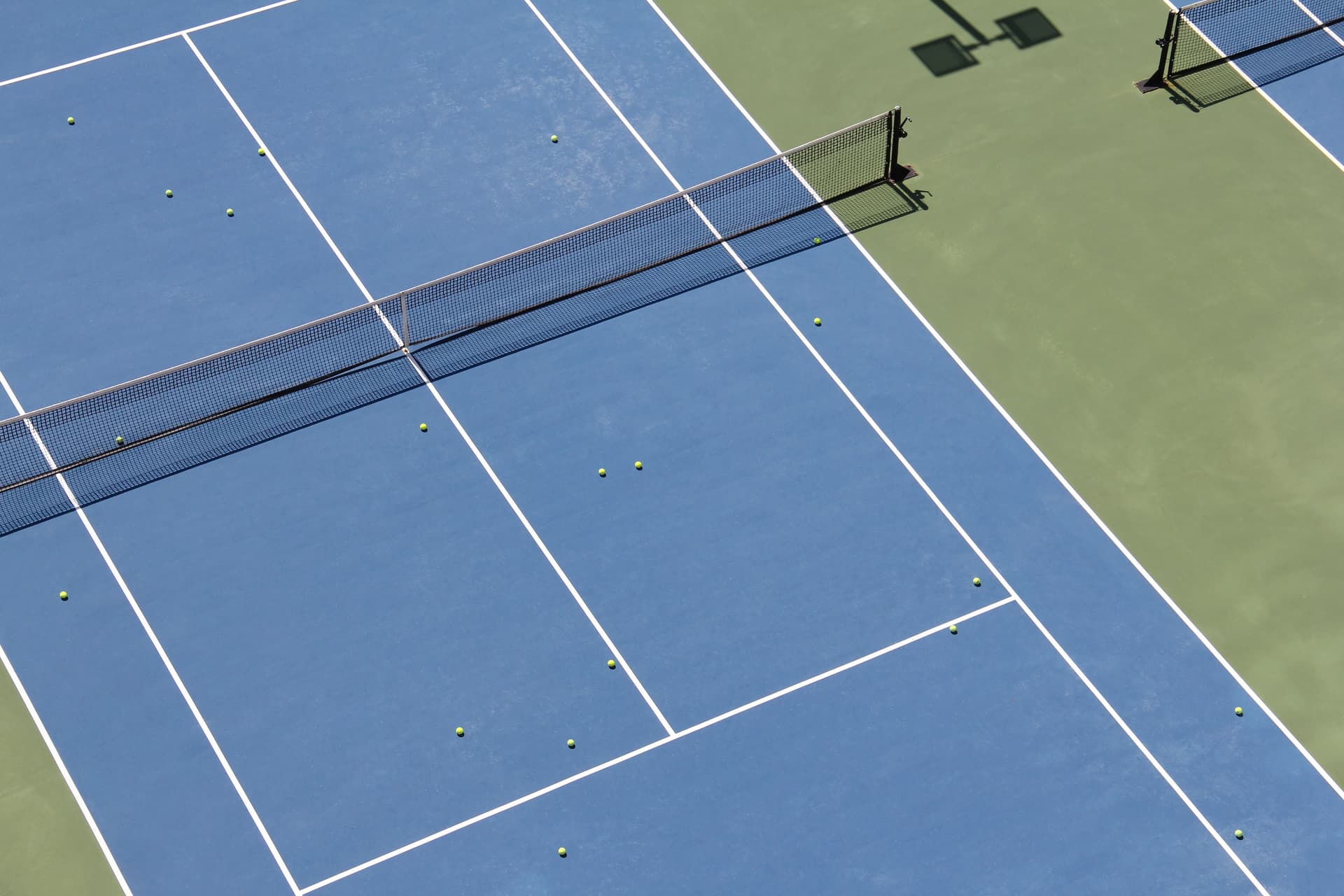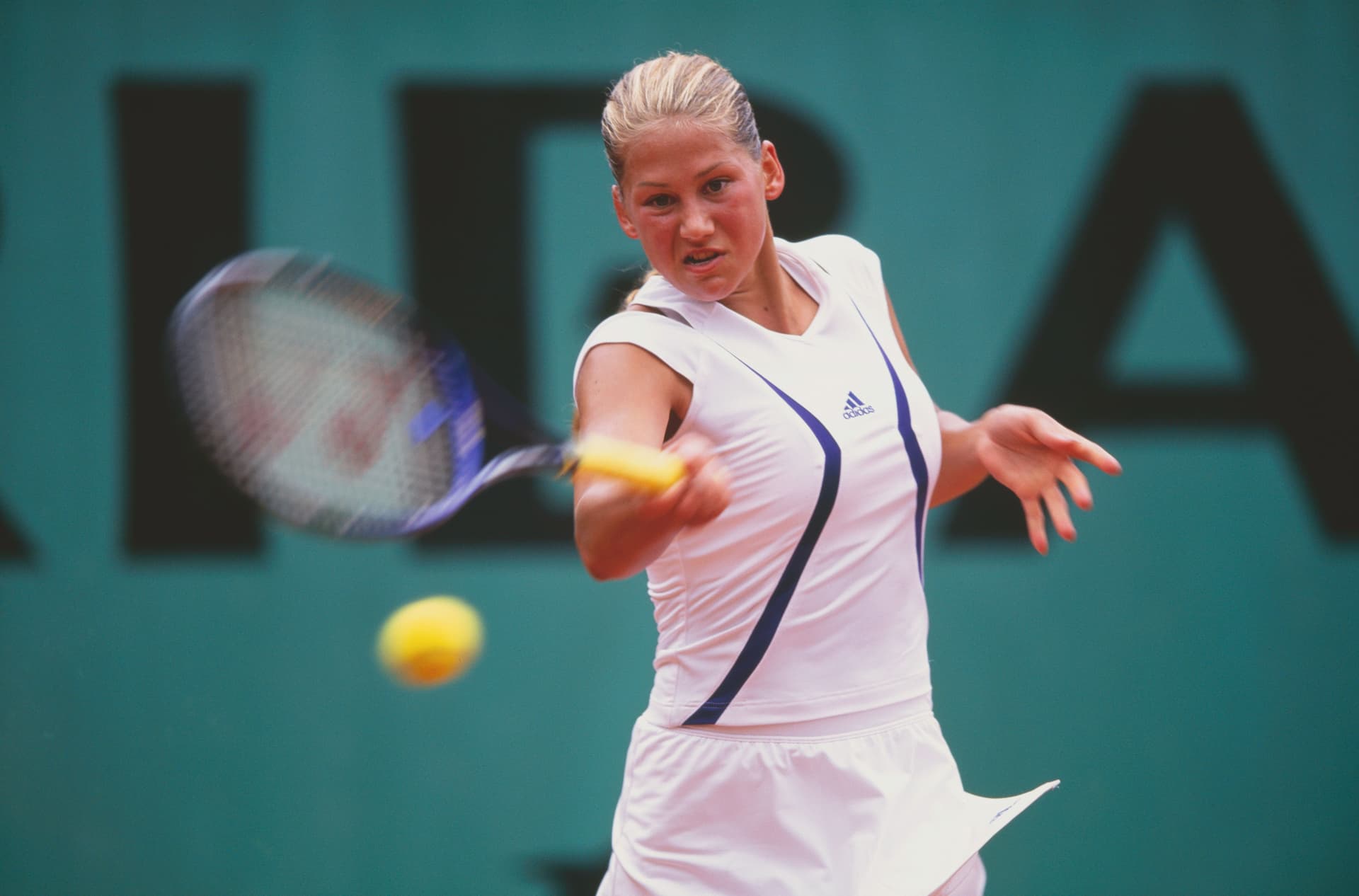Tennis
What is a double fault in tennis?
The record for the most double faults is held by former Russian player Anna Kournikova, who recorded 31 double faults during the 1999 Australian Open.

Blue Tennis Court Surface and Lines//Getty Images
For those of you who do not follow tennis keenly, and are interested in learning the nuances of the sport, one of the key rules you’ll need to know about is the double fault. A critical aspect of tennis, a double fault may seem like a minor mistake, but it has the potential to change the course of a game. Know everything about the double fault in this article.
What is a double fault in tennis?
Before getting into the details of a double fault, it is important to know what a fault in tennis is. A fault is when after the serve, the ball doesn't land in the correct service box or does not clear the net. Now coming to double faults.
A double fault in tennis happens when a player is not able to execute both of their allowed serves. In each point, a player is given two chances to serve - if the first serve is a fault, they have a second chance to make amends for it. However, if the second serve also fails, it results in a double fault, and the opponent is awarded the point. So, in simple words, if a player misses their first serve, they are allowed one more chance.
Technical flaws, in tandem with mounting pressure in high-stakes moments, can cause double faults. These faults are common in tennis, and we have seen even the greatest of the game fail to get it right both times. In the men’s game, a typical match might see a player commit between three to six double faults, while in the women’s game, the number might be slightly higher due to the different serving techniques and physical dynamics.
Two ways to get a service wrong
There are two primary ways a player can fault on their serve - service fault and foot fault.
Most of the faults you see a player commit in a match are service faults. These faults happen when the ball either hits the net or lands outside the designated service box. If a player makes two faults in a row during their serve, it's called a double fault.
Another way a fault can occur is by foot faulting, but this is very rare. Until the player serves the ball, both feet should be behind the baseline and in contact with the ground for the serve to be legal. If not, line judges can call it a foot fault. This is usually due to improper positioning or balance issues.
While foot faults are less common than service faults, they can still contribute to a double fault. For instance, if a player commits a foot fault on their first serve and then makes a service fault on their second serve, it still counts as a double fault.
Lack of accuracy in aiming the serve can also lead to faults, especially when trying to place the ball in a specific area of the service box. High-pressure situations can make these issues worse, as players may become anxious, leading to flawed serves. Additionally, conditions like wind can affect the serve's trajectory and increase the chances of faults.
How are double faults determined?
A tennis ball can travel at really fast speeds, sometimes reaching up to 220 kmph. At such high speeds, it can be extremely challenging for line judges to accurately determine whether the ball lands inside the service box or not. The sheer speed of the ball can make it nearly impossible for the human eye to catch every detail.
To ensure fairness in these situations, modern tennis matches often rely on advanced technology like hawk-eye. Hawk-eye is a computerized system that uses multiple high-speed cameras to track the trajectory of the ball. We often see hawk-eye technology used in cricket as well.
When there's a dispute about whether a serve or shot landed in or out of bounds, players can use the hawk-eye to review the decision.
Each player is allowed three unsuccessful challenges per set. An unsuccessful challenge occurs when the review shows that the original call was correct. If a player uses all three challenges in a set and they are all unsuccessful, the player cannot challenge any more calls in that set.
But if a player's challenge is successful (i.e. when the call is overturned), it does not count against their three challenges. Players can continue to challenge as long as they are correct, with the limit only applying to challenges that are unsuccessful.
Most double faults by a player
Anna Kournikova holds the unwanted record for the most double faults in a single match with 31 during the 1999 Australian Open. Despite this, she won the match.

Anna Kournikova of Russia//Getty
Marc Rosset, a former Swiss player, holds the record for the most double faults in a men’s singles match, with 30 during a 2001 Davis Cup match against Arnaud Clement, which he lost.
Alexander Bublik registered 26 double faults in the 2019 US Open but managed to win his match against Thomas Fabbiano.
FAQs
The two main causes are a service fault, where the ball doesn’t land in the correct area, and a foot fault, where the player steps on or over the baseline before serving.

Umaima Saeed is a professional sports writer whose articles have been featured in several leading websites. She writes long-form content on sports, particularly cricket. She has a penchant for telling human-interest stories. Umaima has contributed articles on cricket to more than a dozen publications, both in print and online.